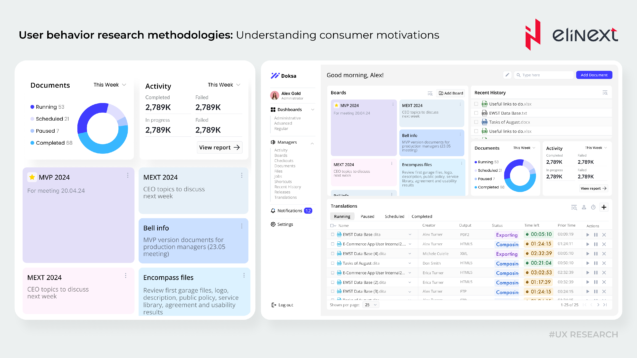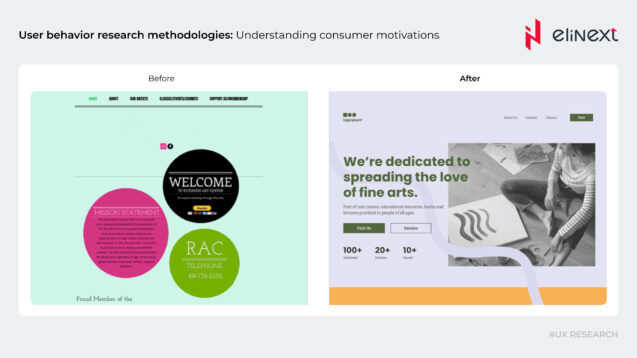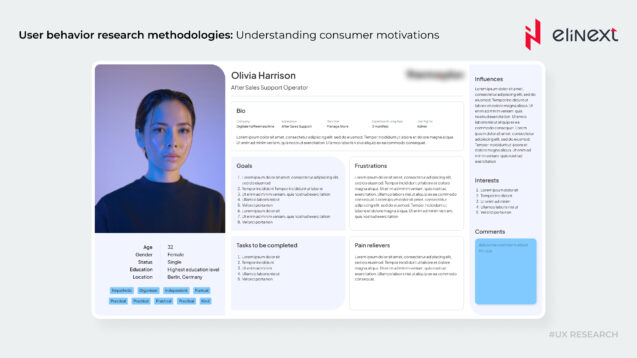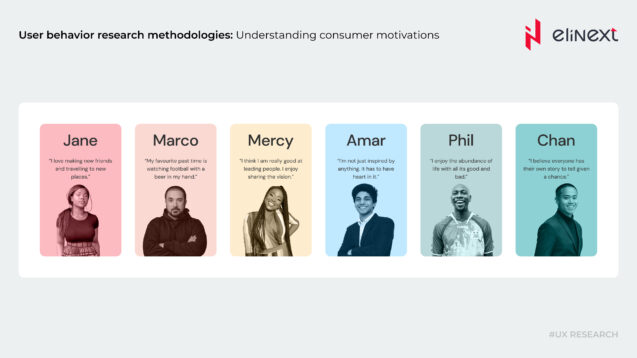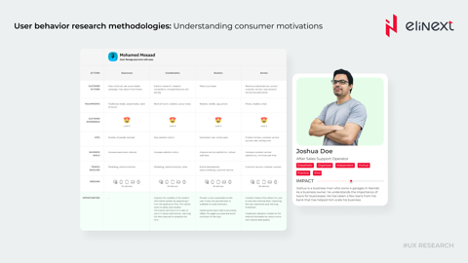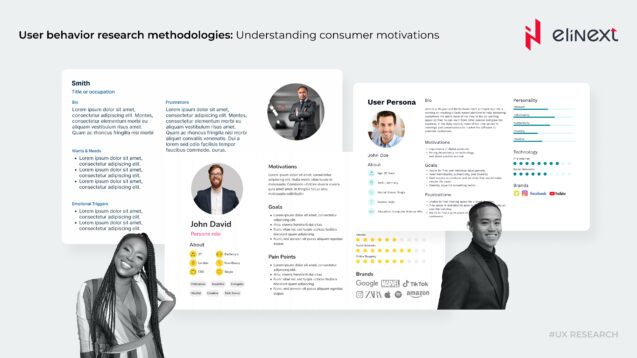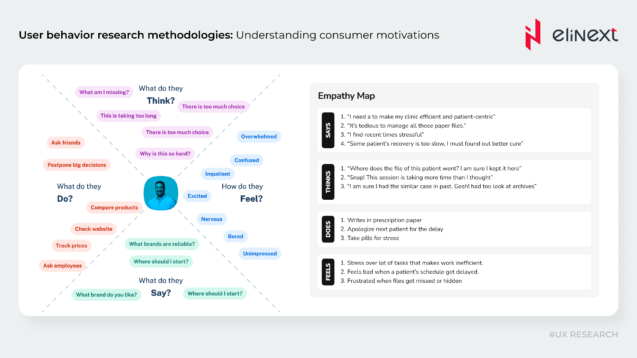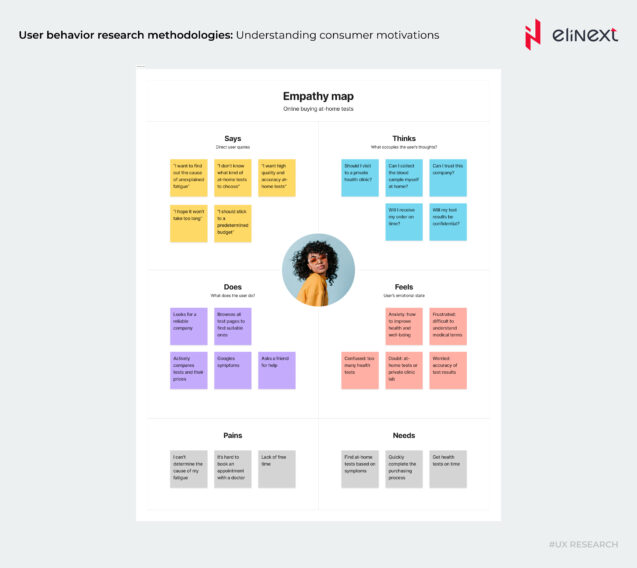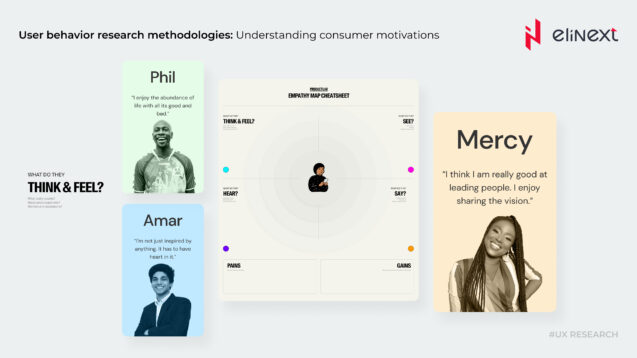Understanding user behavior is a key aspect of the success of any business. To offer a product or service that will remain in demand in the market, it is necessary to know what motivates users, what factors influence their decisions, and what determines their behavior.
In this article, we will explore the main methodologies for studying user behavior and the application of those methods in various fields.
Interface design involves creating a visually appealing and functional connection between users and products or services, directly affecting user interaction. It’s crucial for product success, as neglecting user needs and expectations during development can lead to dissatisfaction and decreased usability.
User experience (UX) is closely tied to the design of the user interface (UI), though they are not the same thing. UX research collects information about users’ preferences, habits, and behaviors to understand and improve their interaction with a product or service. In complex systems like document management, design and functionality development begin with analyzing user roles, pain points, and potential solutions.
When Should You Use User Behavior Research?
User behavior research is necessary in the following cases:
When developing a new product or service. Research helps understand what user needs are unmet and develop a product that meets their expectations.
When modifying an existing product or service. Research gauges user perceptions of changes and informs necessary adjustments.
To identify the target audience. Research identifies potential users’ main characteristics and targets the product accordingly.
To evaluate the effectiveness of advertising campaigns. Research assesses the effectiveness of ads in attracting attention and motivating purchases.
To improve the user experience. Research helps identify problems in the product or service interface and suggests ways to solve them.
Do you need a product redesign? You can find out from our article: Checklist: 8 Signs Your Website Needs A Redesign
User Experience in Interface Development through User Personas: Enhancing User Satisfaction
User personas are an important component of interface design, helping designers better understand their target audience and create products that meet their needs.
User Personas
In this section, we will discuss the importance of user personas, methods for creating them, and their application in various interface design projects to improve user interaction.
Interface developers use user personas to represent different types of users, detailing their characteristics, needs, goals, and difficulties. These profiles are developed based on research and data collected through interviews, surveys, observations, and analysis of existing products. Understanding these user profiles helps designers create interfaces that meet specific user needs and preferences.
Creating User Personas
Defining the Target Audience: Identify the product or service’s users by understanding their demographics, such as location, age, gender, and occupation.
Conducting Research: After defining the target audience, research user needs, preferences, and pain points through interviews, focus groups, surveys, or observations.
Data Analysis: Analyze collected data to identify patterns and similarities among users.
Creating User Profiles: Develop detailed profiles including name, age, occupation, interests, problems, goals, requirements, and preferences based on the analysis.
Iterating and Refining: Test and refine user profiles based on feedback to ensure they accurately represent the target audience.
When Should You Use a User Persona?
User personas can be useful in all aspects of business, but there are two common cases when they are created and used:
During Strategic Sessions: Create user personas to understand customer needs and problems, helping identify opportunities and develop products and services that best meet their needs.
Training Teams: Use user personas for internal training to help team members understand end-user needs and perspectives, leading to better communication, collaboration, and product development.
Benefits of Creating User Profiles
Creating user profiles provides several benefits:
Improves Decision-Making: User profiles inform and evaluate decisions about products, services, design, and content. They help identify needs and pain points, leading to interfaces that match each user type.
Facilitates Complex Decision-Making: Specific user profiles simplify complex decisions, moving away from abstract data and team opinions to clear design principles that meet audience needs and expectations.
Better User Targeting: With detailed information about their preferences, needs, and behavior, you can tailor your products and services to specific user segments. This helps attract and retain more users, as well as increase customer satisfaction.
Empathy Maps: A Powerful Tool for Understanding Users
Empathy maps help designers and developers understand user needs and emotions, aiding in product development and market research.
By capturing user views, emotions, and motivations, designers can create user-oriented solutions.
Creating Empathy Maps
Determine Tasks: Define the goals and purpose of the empathy map to identify users’ feelings, motivations, and mindsets.
Collect Data: Gather information from user research, interviews, surveys, and observations, focusing on users’ thoughts, emotions, actions, and words.
Identify User Personas: Select personas that reflect different user experiences. Ensure they represent the target audience.
Distribute Sectors: Divide the empathy map into four sectors (Says, Thinks, Does, Feels) to represent different aspects of user experience.
Fill in Quadrants: Based on research data, fill in each quadrant with verbatim quotes, thoughts, and other relevant information related to each user persona.
User Interactions and Behavior: Analyze user actions and reactions to identify patterns and trends, gaining insights into their emotions and feelings.
Applying Empathy Maps
Empathy Mapping: An empathy map is a tool used to understand and empathize with users’ experiences. It allows designers and product teams to gain insights into users’ emotions, needs, and pain points.
Analyzing Empathy Maps: Analyzing these maps reveals trends and patterns, uncovering hidden insights, conflicts, and opportunities.
Validation: Cross-reference information from empathy maps with other research methods, such as user interviews and analytics, to ensure accuracy and confirm assumptions.
Implementation: Apply insights from empathy maps to UX design, content strategy, and product development. Continuously update empathy maps with new data to keep them accurate and relevant.
Benefits of Creating Empathy Maps
Generating Empathy: Empathy maps help understand users’ needs and expectations, facilitating more effective interactions with them.
Improving User Experience Understanding: They consider the overall user experience, including problems, product use, and interactions with others.
Identifying Potential Problems and Improvement Opportunities: Empathy maps help identify weak points in the user experience and propose solutions to address them.
Customer Focus: They shift focus from internal processes to customer needs, leading to higher-quality products and services.
Improving Customer Interaction: Empathy maps enable personalized, qualitative service by understanding users’ needs and expectations.
Conclusion
Gaining a comprehensive understanding of your customers doesn’t have to be costly or time-consuming. While specialized tools and detailed data are useful, valuable insights can be gathered through direct questions.
User personas help designers understand their target audience and create better products. UX research assists by providing insights into user needs and identifying issues that impact user experience.
Armed with this information, companies can improve their product or service, making it more user-friendly and appealing. This, in turn, can lead to increased sales, improved brand reputation, and reduced customer churn. Therefore, conducting UX research is an essential step for any business striving for market success.
Do you still need help with your empathy mapping? We are happy to help at Elinext.









